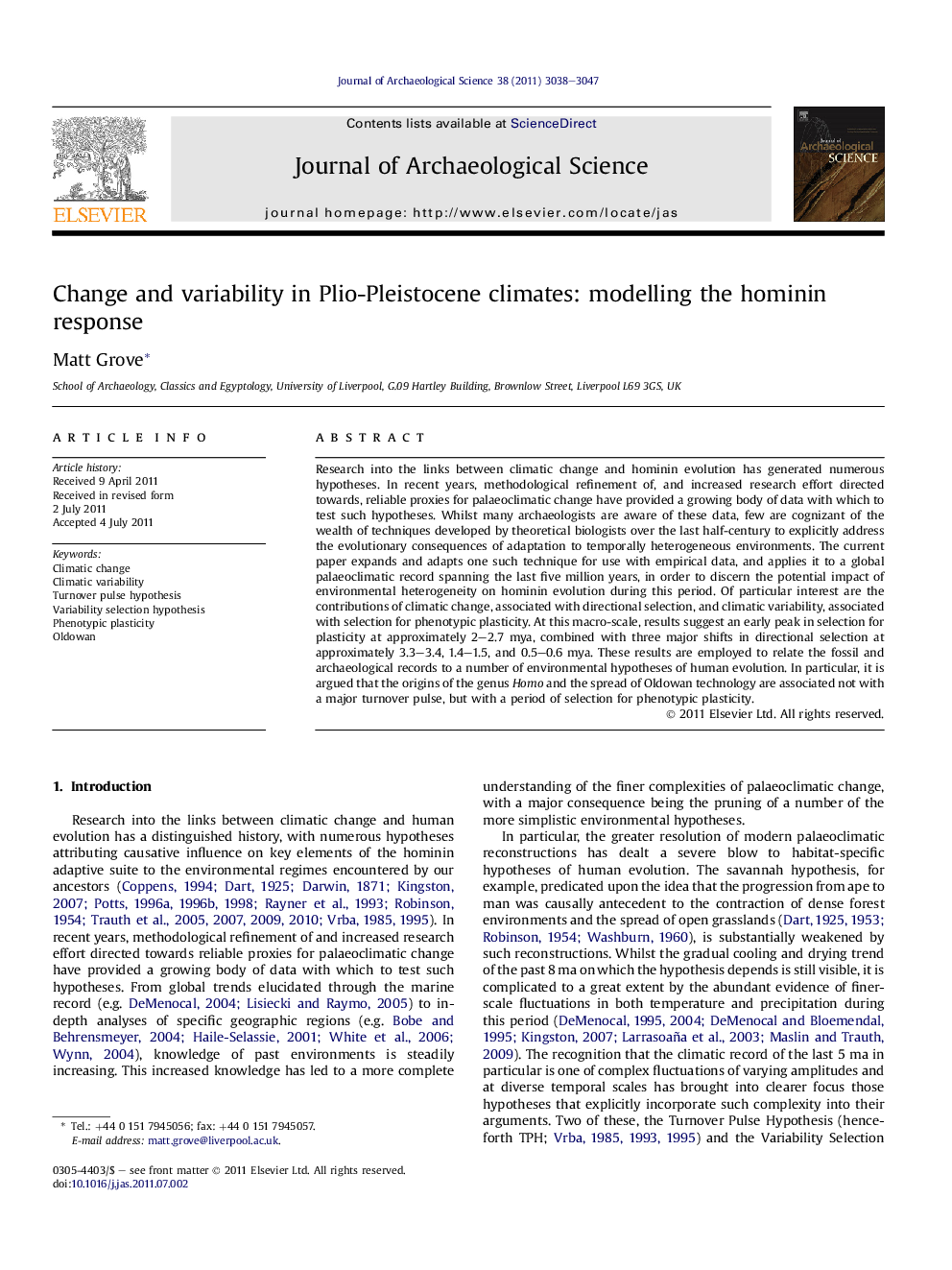| Article ID | Journal | Published Year | Pages | File Type |
|---|---|---|---|---|
| 1036157 | Journal of Archaeological Science | 2011 | 10 Pages |
Research into the links between climatic change and hominin evolution has generated numerous hypotheses. In recent years, methodological refinement of, and increased research effort directed towards, reliable proxies for palaeoclimatic change have provided a growing body of data with which to test such hypotheses. Whilst many archaeologists are aware of these data, few are cognizant of the wealth of techniques developed by theoretical biologists over the last half-century to explicitly address the evolutionary consequences of adaptation to temporally heterogeneous environments. The current paper expands and adapts one such technique for use with empirical data, and applies it to a global palaeoclimatic record spanning the last five million years, in order to discern the potential impact of environmental heterogeneity on hominin evolution during this period. Of particular interest are the contributions of climatic change, associated with directional selection, and climatic variability, associated with selection for phenotypic plasticity. At this macro-scale, results suggest an early peak in selection for plasticity at approximately 2–2.7 mya, combined with three major shifts in directional selection at approximately 3.3–3.4, 1.4–1.5, and 0.5–0.6 mya. These results are employed to relate the fossil and archaeological records to a number of environmental hypotheses of human evolution. In particular, it is argued that the origins of the genus Homo and the spread of Oldowan technology are associated not with a major turnover pulse, but with a period of selection for phenotypic plasticity.
Graphical abstractFigure optionsDownload full-size imageDownload high-quality image (53 K)Download as PowerPoint slideHighlights► The research expands a technique originally developed by theoretical biologists. ► The technique distinguishes between climatic change and climatic variability. ► Change results in directional selection; variability selects for plasticity. ► Results suggest selection for plasticity increases c.2.3–2.5 mya. ► This date range coincides with the evolution of Homo and the spread of the Oldowan.
